Penny Wainwright travelled to Lombardy to discover five of Italy’s thermal spas, each with its own unique qualities…
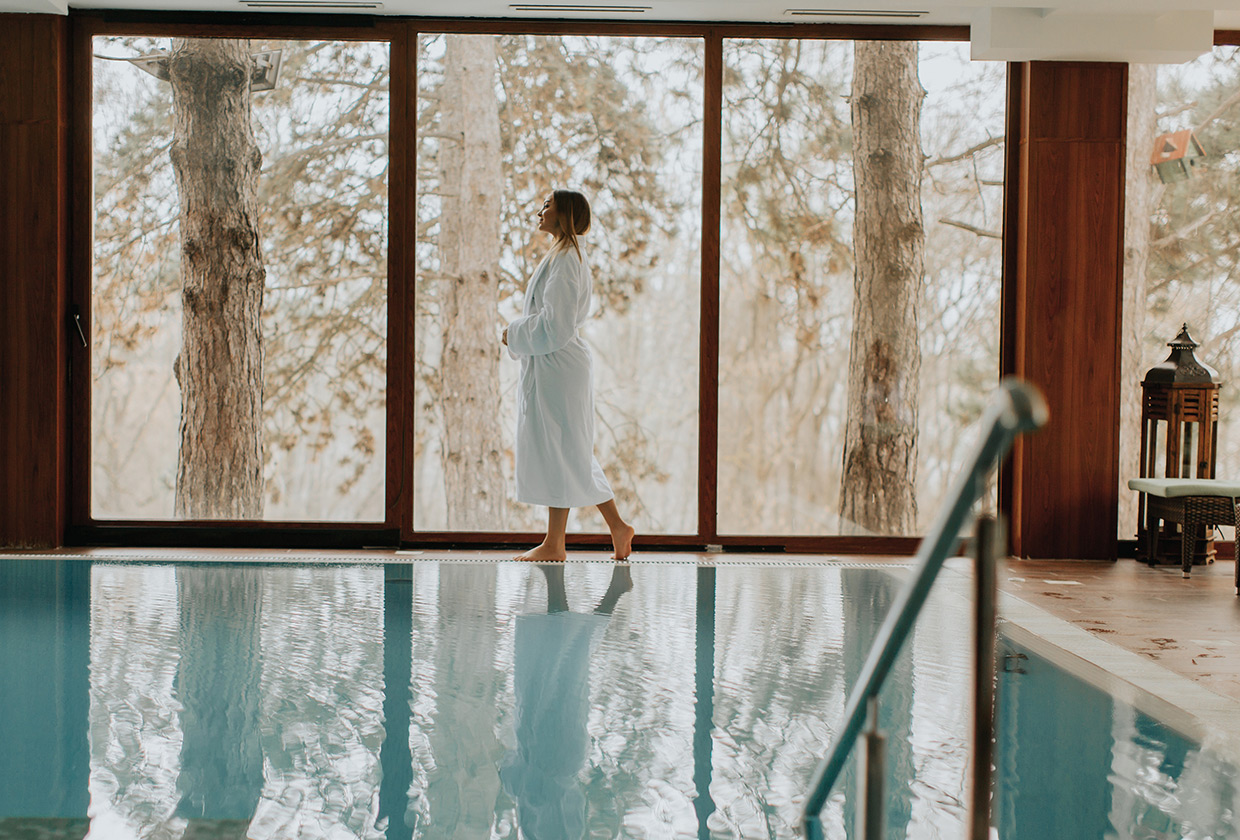
Words and images © Penny Wainwright
The term ‘spa’ is sometimes said to come from an acronym of the Latin phrase ‘sanus per aquam’, meaning ‘health through water’, but while that’s a neat idea, it isn’t true.
The Romans usually didn’t even leave spaces between words when they wrote them, so there wasn’t much opportunity for inventing acronyms. It’s what they call a ‘backronym’.
The term ‘spa’ actually comes from the name of the Belgian town of Spa, which was already known for its mineral springs in Roman times and which the Romans knew as Aquae Spadanae.
No one really knows why they called it Spadanae, but today there are spas all across Europe – and thermal spas in every region of Italy, each with its own character and medical or wellness offer.
Each of the Lombardian spas I visited for this round-up has developed its own speciality.
One is a medical centre, others have cosmetic ranges, and another has sold its spring water for 75 years.
They all have accommodation for visitors and are located in beautiful settings including woodlands, lakesides or in the hills.
In addition to the medical treatments they offer, such spas are also beginning to include fitness and wellness centres.
Here are the five thermal spas in Lombardy:
1. Terme di Boario
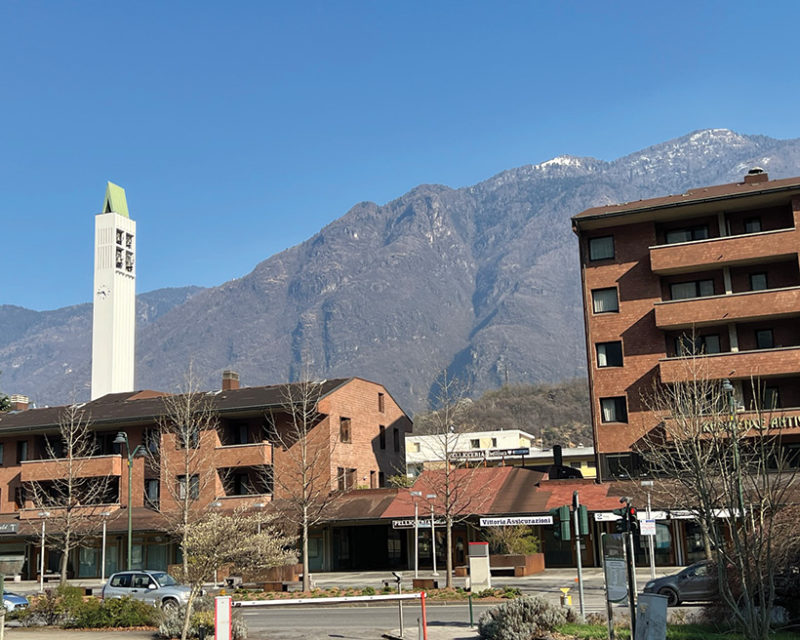
Terme di Boario is in the alpine town of Darfo Boario Terme, in the Val Camonica, of which Boario Terme is the largest frazione.
The Alpi Orobie (the Bergamo Alps) can be seen in the distance, and the Adamello ski area is 37 miles away.
The River Oglio, which runs through the town and valley, comes from nearby Lake Iseo.
Boario Terme first became famous as a thermal spa town in the 19th century, when the advent of the railways brought people to the town to try its waters.
Walking to the Aquacharme Wellness Centre I was acutely aware of the mountains and beautiful scenery that surrounded me. The biodiversity of the valley and the park are an important part of the centre’s wellness offer.
The centre is reached through an imposing entrance of columns and a dome with an antique spring water fountain.
What’s on offer
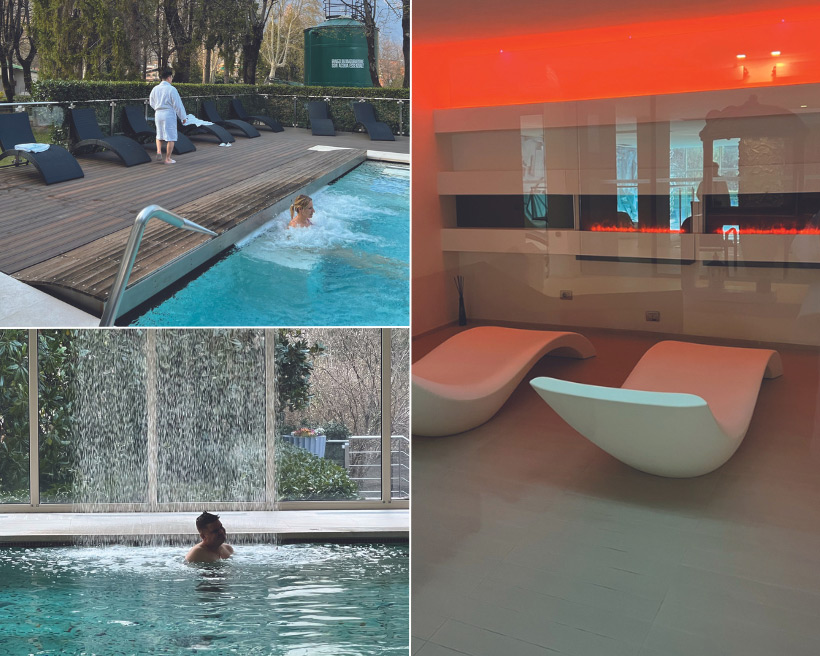
Within the spa there is a beauty centre, two thermal pools, a sauna, steam rooms and sensory relaxation rooms.
There are four spring waters that are used for treatments, plus a beauty range, ‘Effettopele’ (Skin Effect), made from the thermal water and its mud.
Outside I went in a thermal pool which has views of the park. With jets massaging my body, the scent of trees, sunshine and alpine air, this was a relaxing yet stimulating experience.
Visiting
The Wellness Centre has a European Parkinson Therapy Centre offering daily therapy or short breaks.
A spa visit costs £21 for 2 hours; a massage is £34; and mud therapy is from £25.
Accommodation
I stayed in the centre of the town at the 4-star Hotel Rizzi Aquacharme. I had a spacious double room overlooking the town and hills.
Rooms here cost from £72 a night. I ate in the hotel restaurant, Acero Rosso (the Red Maple) for dinner and breakfast.
2. Terme di Trescore
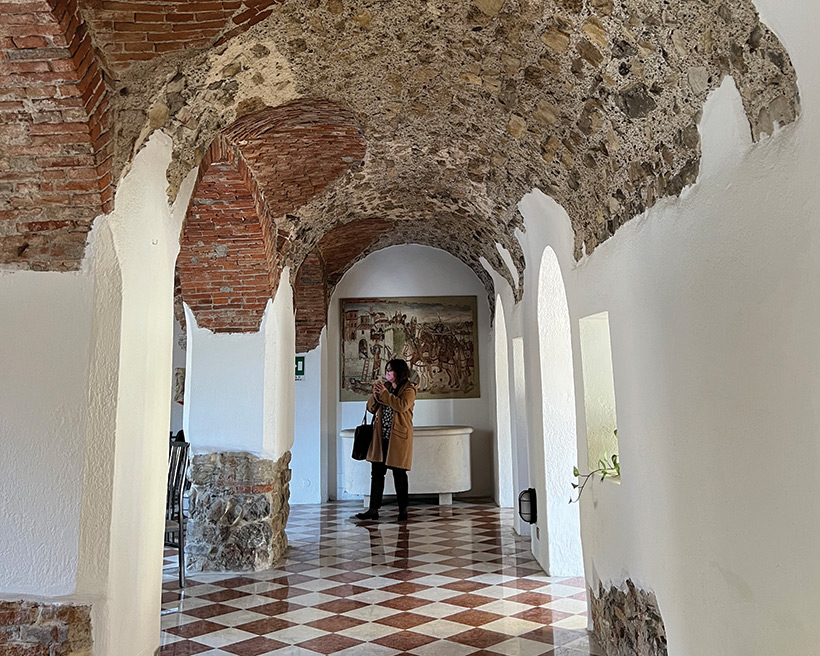
Terme di Trescore was developed as a spa in the 15th century by Bartolomeo Colleoni, a military leader from Bergamo, after his daughter was cured by the thermal waters. He named it ‘Cà dei Bagni’, the House of Baths.
Inside the oldest part of the building the brick arched ceilings give a sense of its history.
The town of Trescore Balneario is nine miles from Bergamo and is situated at the entrance to the Val Cavallina.
The River Cherio, which emerges from Lake Endine, is one of three water sources which supply the water for treatments.
Terme di Trescore is today a very busy medical spa set over three floors and dealing mostly with respiratory or lung conditions.
When I visited, many people were waiting for treatments with staff greeting them as they arrived.
The first step at Terme di Trescore is an assessment by the doctor, who decides which treatments are needed.
What’s on offer
Treatments include an aerosol nasal wash with sulphurous water plus ten minutes inhalation to help with respiratory problems.
‘Fango’ is mud therapy using mineral-rich local mud infused with thermal water at 42 degrees used for skin conditions or joint pains.
After the mud treatment, the patient has a thermal bath and a massage.
For other patients exercising in the small swimming pool or going into the gym may be prescribed by the doctor.
A range of cosmetics using herbs and the thermal waters has been created.
Visiting
The spa is open Monday to Saturday mornings.
Accommodation
The Terme has a hotel, Residence delle Tre Corone, for those wishing to stay during their treatments.
The apartments overlook the surrounding countryside. It costs £115 for a two-night stay.
3. Terme di Sirmione
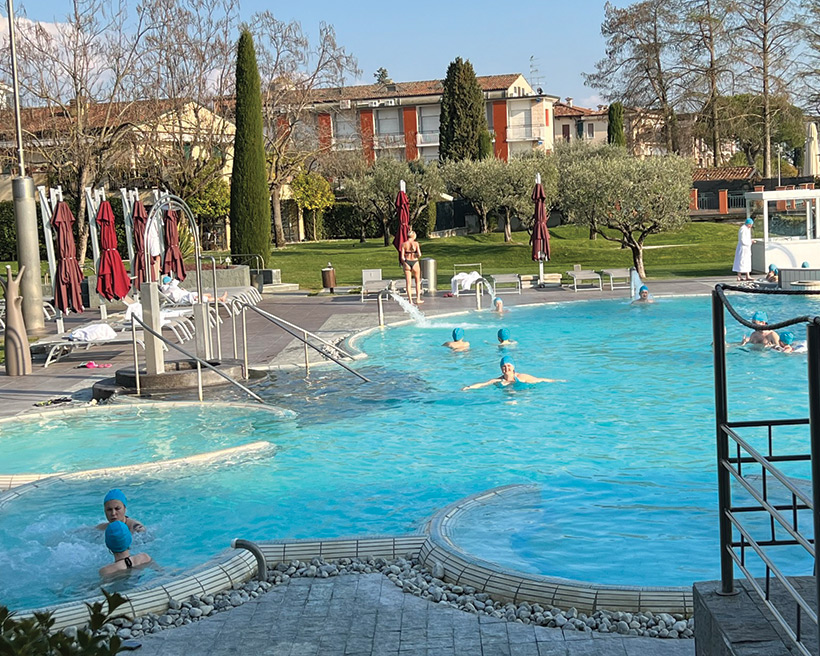
Sirmione is a beautiful old town jutting into Lake Garda.
The walls of 13th-century Castello Scaligero are built into the lake and dominate the entrance to the town. Vehicles cannot enter the town, and pedestrians walk into the town through an archway.
Sirmione is a busy place during the daytime with visitors exploring the narrow streets and restaurants.
Strolling through the town in the evening I discovered Piazza Carducci, where the opera singer Maria Callas once lived.
Towards the end of the peninsula are the ruins of a Roman villa known as the Grotto di Catullo. This dates all the way back to the 1st century BC and is believed to be where the poet Catullus lived.
Terme di Sirmione’s Aquaria Thermal Spa was a short walk through the town from my hotel.
The thermal waters of Sirmione’s Aquaria Spa were first discovered by a diver who spotted bubbles coming up from the bottom of the lake.
This spring water was 65 degrees centigrade and, once piped to the spa and cooled, was used for thermal treatments.
What’s on offer
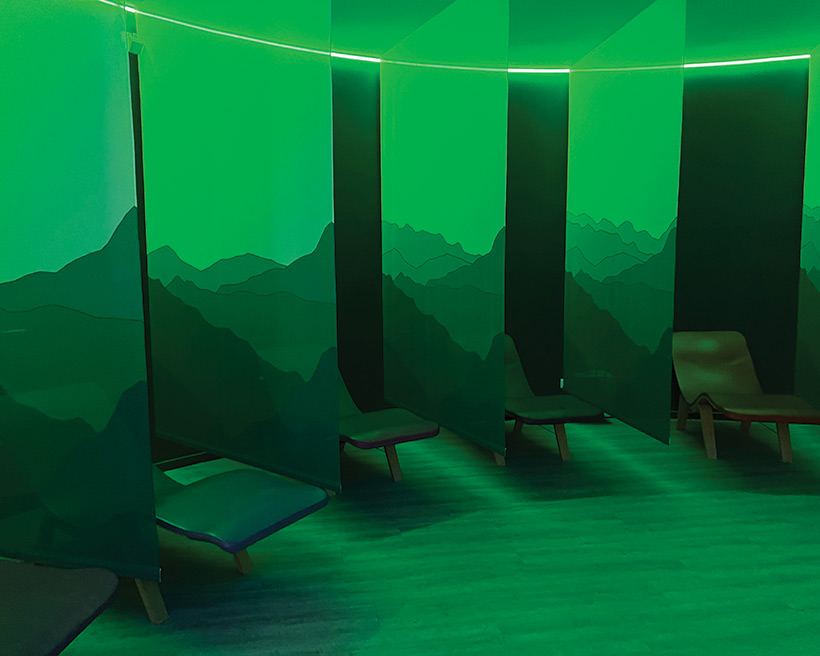
The spa has indoor pools plus several rooms for relaxation, saunas and circulatory baths.
Outside there are thermal pools with jets, waterfalls and an infinity pool.
The pools and loungers along the edge of the lake add to the feeling of wellbeing. I relaxed as I tried the pools and relaxation rooms, especially the green rain room.
Visiting
The spa opens daily and costs from £16 to £50, with treatments starting at £50.
Castello Scaligero is open to visitors daily except on Mondays and Sunday afternoons. Tickets cost £5, children go in free.
Accommodation
I stayed in the 4-star Hotel Sirmione e Promessi Sposi on the edge of the lake, where hotel rooms start at £109 a night.
I had a lovely room overlooking a piazza and the lake.
The hotel’s Ristorante dei Poeti, where I ate, specialises in dishes using fish from the lake.
4. Rivanazzano Terme
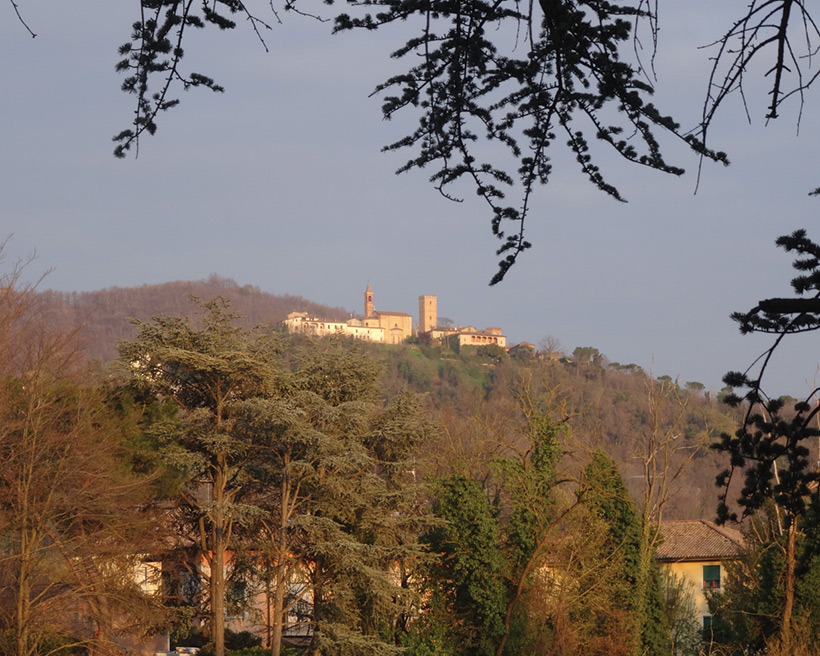
Rivanazzano Terme is in the province of Pavia. The River Staffora runs through the town and onwards towards the River Po.
This region is Oltrepò Pavese, meaning the land beyond the River Po.
Driving towards Rivanazzano, I passed between fields of vineyards and mulberries with hills in the distance.
I walked into the town to Piazza Cornaggia, where there was a busy market, the town hall, Torre Pentagonale, and a park. In the distance Castello Nazzano sits on a hillside overlooking the town.
I passed Panetteria Betty with her bread display outside including the local bread, Micca, which has an unusual bumpy shape.
Rivanazzano became a town in around the 1st century BC under the under of the Romans.
Thermal waters rich in iodine were bottled and sold as medicinal water in 1849.
By 1873 more thermal springs were found and a train line built in 1891 enabled visitors to reach Rivanazzano’s spa.
In 2009 Rivanazzano’s name changed to include Terme, underlining the importance of the water sources and their impact on the town.
Today a modern thermal health and wellness centre has been developed with accommodation for guests.
What’s on offer
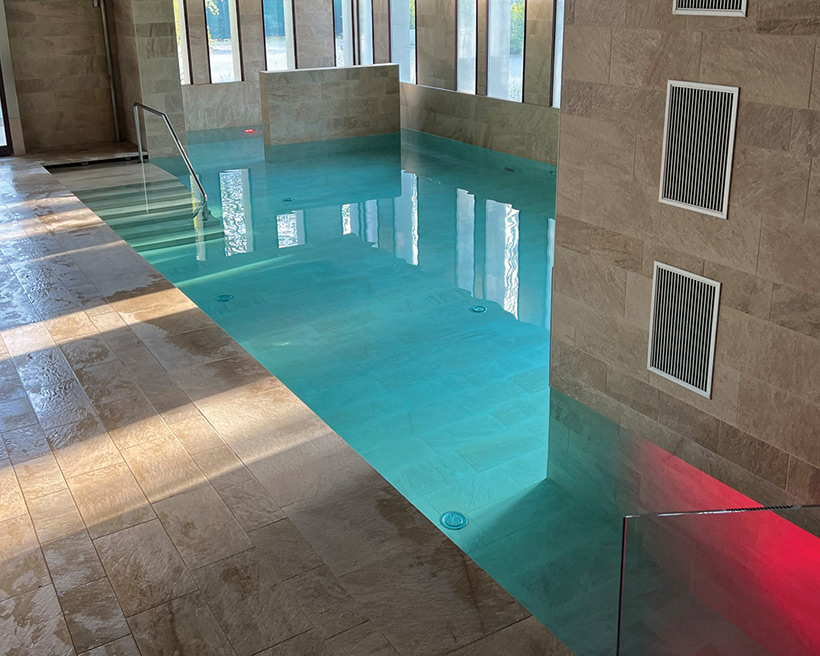
Treatments are based on the Terme’s philosophy ‘Born from water, sustained by passion’.
Both sulphurous water and sea water are used for mud therapy and massages and aquafitness.
There is a swimming pool, vascular pool, sauna and Turkish bath as part of the wellness centre.
I enjoyed swimming in the heated pool with coloured lights and also spending time in the sauna.
In the double pool I walked through the 37 degrees C water on one side and 27 degrees C in the other, which stimulates circulation of the legs.
Visiting
The spa costs £35 for 3 hours, a massage is £35, Turkish bath and sauna are £21.
Accommodation
Apartments cost from £73 a night.
5. Terme di Vallio
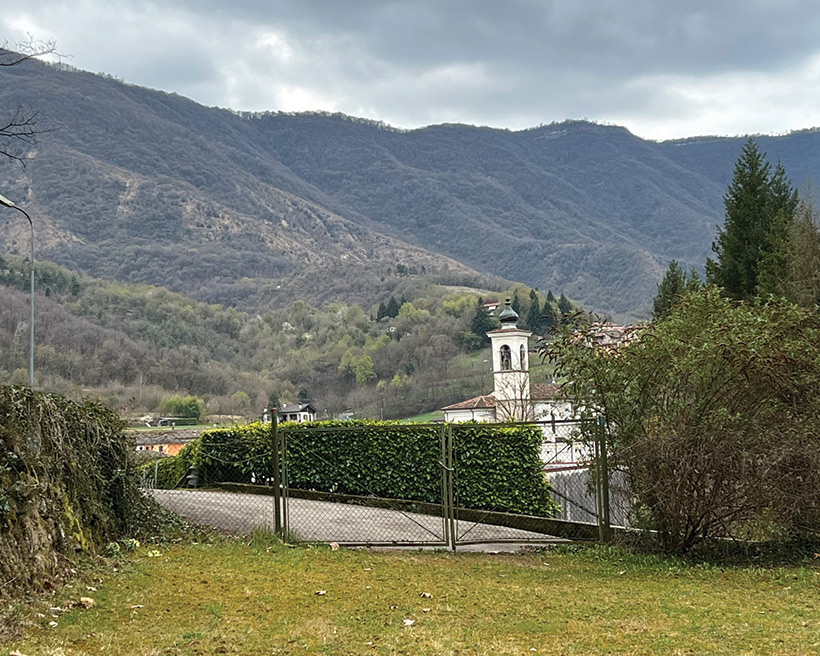
Terme di Vallio is surrounded by the Moreniche Hills, ten minutes west of Lake Garda.
The waters, woodland and microclimate of the spa all combine to revive the body and mind.
The Berardi family have owned the spa since Albino Beradi discovered the healing properties of the water, which cured his kidney problems.
He started selling Acqua Castello water in 1955, then developed the area as a spa to drink the spring water, and followed this by building a bottling plant nearby seven years later.
Acqua Castello water is still bottled in glass and wrapped in paper to protect it from the light. It is sold across Italy, Switzerland, France, China and Taiwan.
The carbonated water aids digestion and keeps the kidneys healthy.
Different effects are caused by drinking water on an empty stomach to detox the body and clean the kidneys or with a meal to aid digestion.
The importance of the water to the small town of Vallio was reflected in an official name change to Vallio Terme in 1976.
A woodland walk from the main building leads to a stream and botanical gardens.
The current owner, Sergio Berardi, explained how the presence of bees and shrimps indicates that the water is pure.
The environment, stream and underground water are continually assessed to check the purity of the water before it is bottled.
What’s on offer
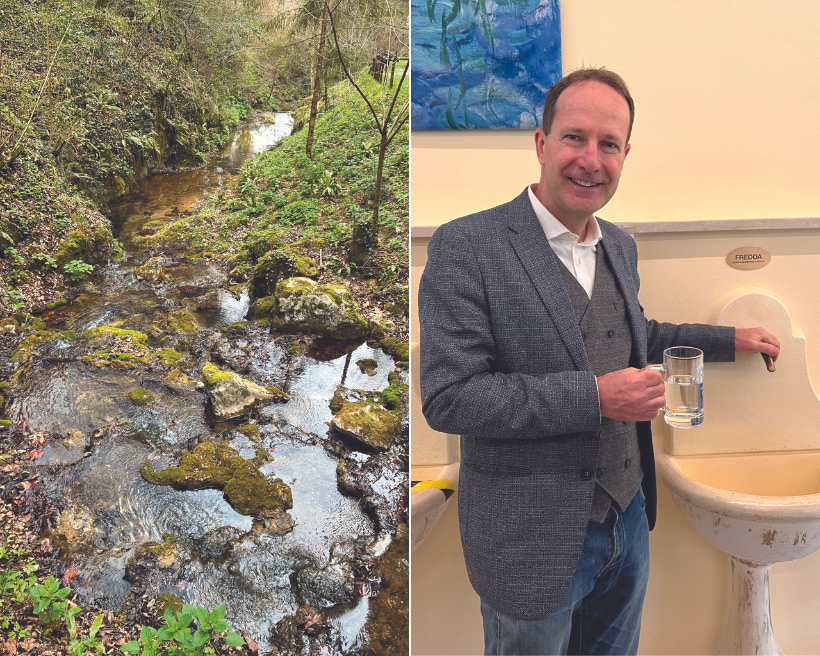
In addition to drinking the spring water, yoga, massage, meditation, inhalation and breathing exercises all take part in the spa.
Visiting
The spa is open from May to October, Monday to Saturday mornings.
Accommodation
The Beradi family have converted two of their old buildings into hotels, Ostello alla Sorgente and Villa Giulia. By retaining period details and antique furnishings the two properties have become comfortable places to stay with countryside views. A double room costs from £77 a night.
Get more holiday inspiration in our Italian travel archives
